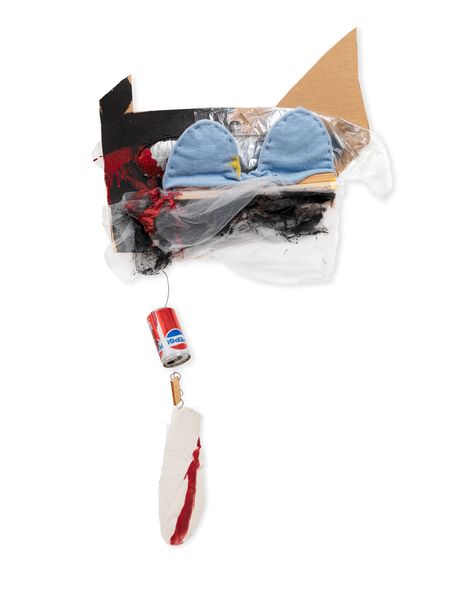
Richard Tuttle
29 November - 8 March 2015
Somerset
Hauser & Wirth Somerset is excited to present the gallery's first exhibition dedicated to renowned American artist Richard Tuttle. Having works previously on display as part of 'Re-view: Onnasch Collection' (2013 – 2014) at Hauser & Wirth London and Hauser & Wirth New York, Tuttle returns as the focus in a solo exhibition devoted to his works from the 1980s, a highly creative period in his career. The exhibition showcases a selection of Tuttle's multi-media assemblages, offering an insight into his improvised free-form aesthetic and his delicate three-dimensional work, with its abundance of colours, shapes and materials. Emerging in the 1960s in a generation of process-oriented postminimalism, Tuttle has created a remarkable and varied body of work that defies historical or stylistic categorisation. The visual language of the work has a lot in common with painting, sculpture, poetry and drawing, yet it appears to exist in the space between these practices. His process is deeply instinctual and responsive, crafting unique objects that must be encountered on their own terms. Tuttle's artistic evolution in the 1980s echoed a general reaction in the art world to the reductive formalism and reserve that had come to dominate artistic discourse in the preceding decade. His wall-affixed assemblage constructions began to incorporate more diverse materials and also began to literally expand into three-dimensional space. With these works, Tuttle subverted expectations about Modernist sculpture and instead created small poetic objects. Tuttle's dedication to every-day materials, such as aluminium, foil, plastic and rope, emphasises the hand-made, hand-held nature of the objects and as a result, imbues them with a sense of familiarity and intimacy. The significance of the everyday is highlighted in the 1984 series 'Two or More' – utilising cardboard, wire, wood, plastic, foil and even an aluminium Pepsi can. The geometry of the cardboard backings is pitted against the plasticity of the objects Tuttle attaches to them. Held together with palpable delicacy by ephemeral connective materials – like fine wire, cursory gluing and in other cases, tape. He aims to make a singular world out of disparate parts, and in doing so changes the inference of individual objects, mitigating their beginnings and creating a new compostition altogether. Tuttle wants viewers to use visual and tactile senses to perceive the work. The pieces are deliberately hung lower than eye height to relate them equally to the hand, allowing the viewer to experience a sense of the hand and eye being engaged simultaneously – which is the experience of the artist in creating the works. Tuttle intends the viewer to engage in new sensory experiences, and in doing so, expand their contact with the totality of human existence. 'One remarkable phenomenon of my work is its love for being hung at a height of fifty-four inches from the floor... [This height] brings me in contact with anything that's ever existed in human life.' – Richard Tuttle, 2004. Tuttle is drawn to the ambience and light that can be reflected by certain materials and surfaces; his use of cellophane, glass, plastic and aluminium such as in the 1986 series 'Secret Ways to remain happy', promotes the play of light and shadows, enhanced by the vibrant palette of these works, further creating unique experiences of perception. Tuttle masterfully merges art forms to construct composite works that are both beguiling and fascinating, truly engaging the viewer to look and look again. About the Artist Richard Tuttle was born in New Jersey in 1941. He studied art, philosophy and literature at Trinity College, Hartford, Connecticut, from 1959 to 1963. Tuttle has been the subject of numerous solo exhibitions and retrospectives, at venues including the Whitney Museum of American Art, Museum of Contemporary Art, Chicago, IL, the Dallas Musuem of Art, Dallas, Texas, the Drawing Center, New York, NY, the ICA, London, England, and the Musée d’art moderne de la ville de Paris, Paris, France, among many others. His work was also included in the Venice Biennale in 1997 and 2001; the Whitney Biennial in 1977, 1979, 1987, and 2000; and Documenta 5 (1972), 6 (1977), and 7 (1982). His work is held in major private and public collections around the world. In October 2014 a major exhibition of Tuttle's works opened at Whitechapel Gallery, London, England, alongside a commission in the Turbine Hall at Tate Modern, London, England. Richard Tuttle currently lives and works between Maine, New Mexico and New York.
Related Content
Current Exhibitions
1 / 12











